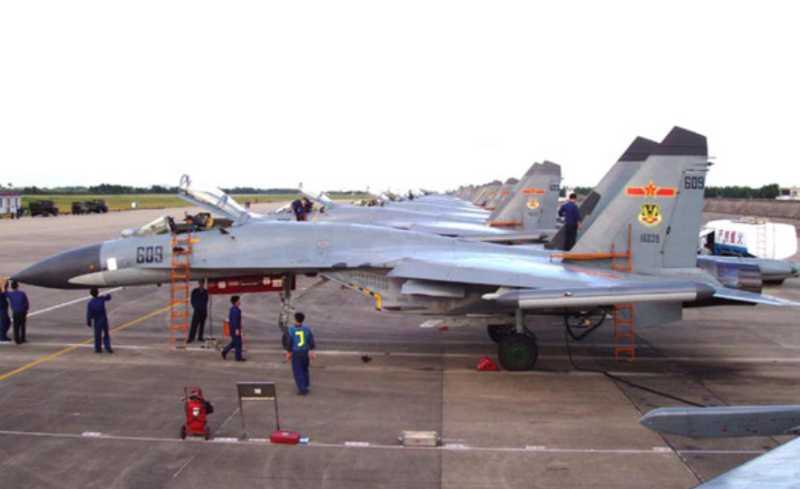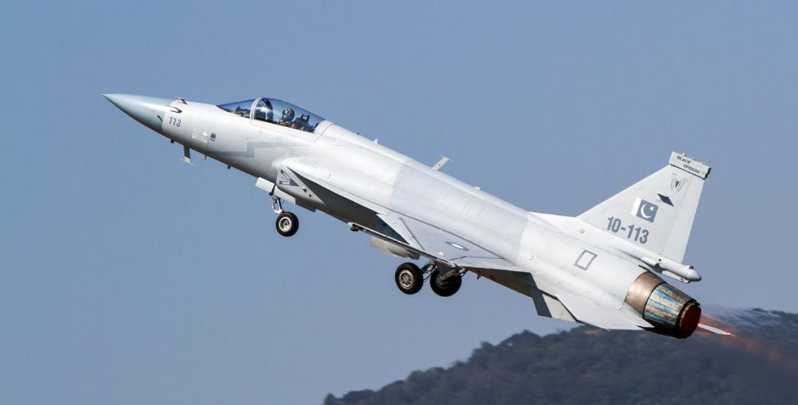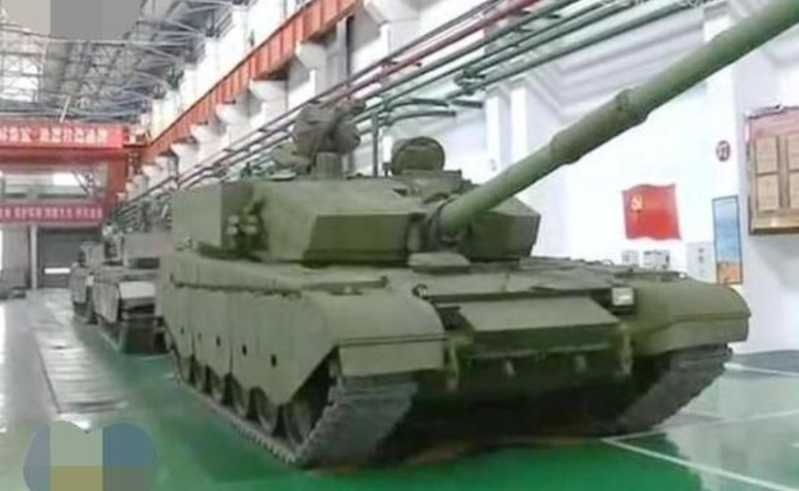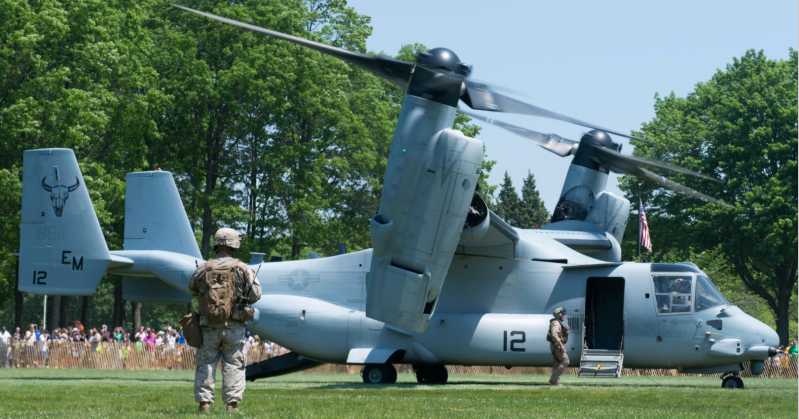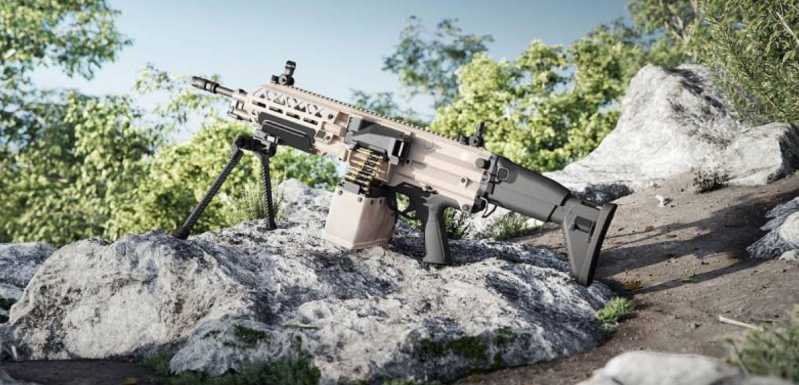At about 8:00 on May 1, 2024, the Chinese Navy’s first flat-deck catapult-type aircraft carrier, the "Fujian", set sail from the Shanghai Jiangnan Shipyard and headed for the relevant waters to carry out the first sea trial, focusing on verifying the reliability and stability of the aircraft carrier’s power, power and other systems. This means that since the "Fujian" ship was launched in June 2022, after nearly two years of mooring tests and equipment commissioning, it has taken an important step towards its final delivery to the Navy. During the sea trial, the "Fujian" ship completed a series of tests on power, power and other system equipment, and achieved the expected results.
At about 3 pm on May 8, the "Fujian" ship successfully returned to the Shanghai Jiangnan Shipyard dock after completing various navigation test tasks. Unlike previous sea trials of new Chinese naval equipment, this time the "Fujian" ship passed the sea trial. The film and video provided unprecedented all-round coverage and display to the outside world, making many details of the world’s first conventional-powered electromagnetic catapult aircraft carrier known to the outside world. On the one hand, this is a reflection of the confidence of the Chinese Navy in the development of technology and equipment, and on the other hand, it is showing the world the great achievements made by the Chinese Navy in the process of rapid development.
On May 23, the "Fujian" ship set sail again for the second sea trial and returned on June 11. Only half a month after the first sea trial, the "Fujian" ship conducted a second sea trial, and the second sea trial lasted for 20 days, which is also very rare in the history of previous sea trials of aircraft carriers, fully demonstrating that the power and power systems on the ship are stable and reliable.
For a long period of time in the future, aircraft carriers will still be an important symbol of a naval power. One of the equipment, its comprehensive sea and air defense and attack capabilities are not possessed by any other naval equipment at present. In addition, with the development of new technologies and the continuous improvement of the maturity of various new equipment, such as electromagnetic catapult/arresting devices, all-electric propulsion technology, integrated radio frequency management and information integration technology, fifth-generation stealth carrier-based fighters, large and medium-sized unmanned carrier-based aircraft, etc., have endowed aircraft carriers with stronger defense capabilities, attack capabilities, information warfare capabilities and survivability. This is also the main reason why the United States, as the world’s first naval power, continued to develop and develop a new generation of "Ford" class aircraft carriers to replace the current main "Nimitz" class aircraft carriers after the disintegration of the Soviet Union.
Even though regional naval powers such as Britain and France are restricted by technical and economic factors, they have not given up the development of new aircraft carriers. The United Kingdom has developed and built 2 60,000-ton ski-jump aircraft carriers, namely the "Queen Elizabeth" and the "Prince of Wales"; and France has also launched a new generation of aircraft carriers (PANG) with more advanced technology and performance than the "Charles de Gaulle" in service. All these prove that aircraft carriers are still the core of the development of the navy’s main combat equipment at this stage, and are also the main equipment for the display and projection of overseas military forces.
For China, which aims to build an ocean-going navy with strong offensive and defensive capabilities, having a large-scale and technologically advanced aircraft carrier fleet is also the main direction of future naval development. The success of the first sea trial of the "Fujian" ship not only makes China the second country besides the United States to independently develop and build modern flat-deck catapult-type aircraft carriers, but also makes China the country with the largest aircraft carrier scale in the world besides the United States.
As the world’s first large conventional-powered aircraft carrier to use the most advanced electromagnetic catapult/arresting device, the "Fujian" has broken the long-standing US monopoly in related technology and the inherent thinking that only nuclear-powered aircraft carriers can use electromagnetic catapults/arresting devices, and has embarked on a new development path for modern large-deck aircraft carriers. The first sea trial of the "Fujian" also gave us a clearer understanding of some of the key technologies used by the aircraft carrier, the most important of which are the following aspects:
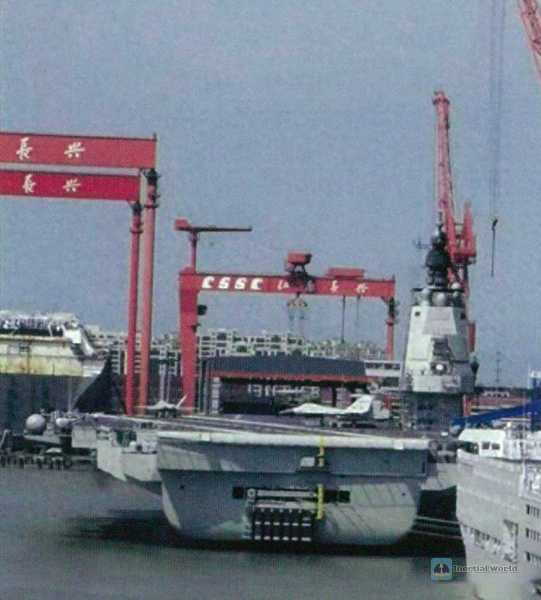
Electromagnetic catapult
Through the high-definition photos and videos released by the "Fujian" sea trial, we can clearly see the three electromagnetic catapults installed on the bow and the angled deck (and the electromagnetic arresting cable at the rear of the angled deck has not yet been installed). Compared with the initial state when it was launched, the "Fujian" ship has completed the installation and commissioning of three electromagnetic catapults during the mooring, outfitting and testing period of nearly two years. On the eve of the sea trial, the "counterweight pulley" was used to conduct static ejection tests on the three catapults under "different loads", which is a prerequisite for determining the first sea trial.
The counterweight pulley is a key equipment for aircraft carriers to test the working state of catapults. Whether it is a steam catapult or an electromagnetic catapult, it needs to undergo a large number of ejection tests to ensure normal working performance. Before the actual launch of carrier-based aircraft, aircraft carriers need to use this counterweight pulley to "simulate" carrier-based aircraft to test the state of the catapult. Only after the counterweight pulley test and the catapult’s performance in all aspects meets the requirements can the aircraft carrier enter the sea trial stage. From this point of view, the three electromagnetic catapults on the "Fujian" ship have the ability to conduct actual machine ejection tests during the first sea trial, which also laid a solid foundation for the subsequent ship-aircraft matching test. This means that the "Fujian" ship has achieved a qualitative leap in power supply and energy storage technology, thus avoiding many detours and technical traps in electromagnetic catapult technology, and catching up with or even surpassing the relevant technologies of the United States.
As we all know, the US Navy’s new generation of "Ford" class aircraft carrier "Ford" is the world’s first aircraft carrier to use an electromagnetic catapult, which is also the key to its proud and more powerful combat capability. However, the "Ford" has not yet formed a comprehensive combat capability since it was delivered to the US Navy in 2017. Among them, the poor performance of the electromagnetic catapult is one of the key reasons. In particular, although its failure cycle has been improved to the level of once in 600 sorties (the failure cycle of traditional steam catapults is about once in the first 450 sorties), it is still far from the designed indicator of once in 6,000 sorties. The reason for this problem is actually that the combination of medium-voltage AC system and flywheel energy storage technology currently used in the United States does not particularly meet the requirements of electromagnetic catapults.
The core problem of electromagnetic catapult is to convert a large amount of electrical energy into mechanical energy in a very short time. Its instantaneous current output is extremely high, and AC cannot adapt to the impact of such a large current. If the electromagnetic arresting system and a large number of radar electronic equipment equipped on the aircraft carrier are added, full power use will often cause the entire power system to collapse (or the number of electrical equipment and the number of consecutive working times of the catapult must be limited). Although the flywheel energy storage device is more mature in technology and can also meet the requirements of charging and discharging in a short time, its size and weight are still large. Even a 100,000-ton super aircraft carrier like the "Ford" class needs to be carefully designed and the number of installations determined. In addition, a large number of mechanical structural components also lead to a high failure rate of the "Ford", and its performance is indeed not ideal under high-intensity use and instantaneous high-power output (compared with the design expectation). In addition, the four electromagnetic catapults on the "Ford" class aircraft carrier are only equipped with one set of flywheel energy storage devices. Therefore, once the flywheel energy storage device fails or is damaged, all four electromagnetic catapults will lose their ability to operate, which is a very fatal potential defect for aircraft carriers.
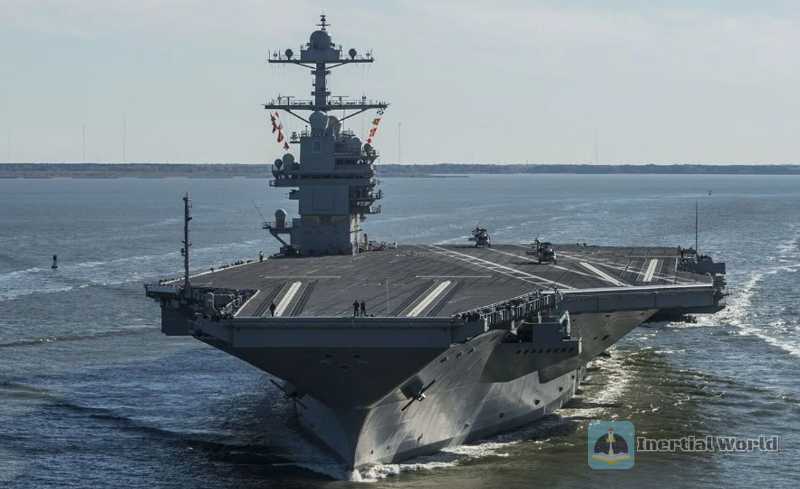
Of course, the above problems are caused by the early development of the United States in related fields (the electromagnetic catapult used by the Ford was actually developed under the technical conditions of the late 1990s and early 21st century), and the imperfect early related experiments and tests (many experiments and tests were carried out after the ship was installed). Unless the technical development route is changed, it is difficult to fundamentally solve these problems.
Since the Fujian ship was developed later, the relevant technology has achieved more comprehensive development and breakthroughs, so the more advanced medium-voltage DC system and capacitor energy storage technology route is adopted, which not only avoids the problems of the relevant US systems, but also has better power transmission stability, stronger large current carrying capacity, faster charging/discharging speed, smaller weight and volume, and lower energy loss. In addition, three capacitor energy storage devices are installed on the Fujian ship to support the independent operation of three electromagnetic catapults, which greatly improves the performance and reliability of the electromagnetic catapult. With the support of the integrated power system, the power output, distribution and use efficiency of the whole ship are higher. This is also an important reason why the "Fujian" ship can fully guarantee the efficient operation of the three electromagnetic catapults even though it finally adopts conventional power devices. This means that in most cases, the operating efficiency of the three electromagnetic catapults on the "Fujian" ship is not much worse than the four electromagnetic catapults on the "Ford" class, especially when used continuously at high intensity.
Power system
One of the focuses of the first sea trial of the "Fujian" ship is the test of the power system. From the photos and videos released, we can also clearly see that it has carried out low-speed, medium-speed, high-speed navigation and small-radius turning navigation and other test projects, thereby verifying the reliability and stability of the output and distribution of the steam turbines, boilers, transmission mechanical structures, reducers, gearboxes, shaft systems, rudder systems and related power systems of the aircraft carrier power system under low power/high power and full power conditions. Since the first two aircraft carriers of the Chinese Navy both use steam power devices, there has been a relatively rich accumulation of technical development in this area. Therefore, as a subsequent development and improvement power, the steam power system on the "Fujian" ship will not have many technical problems.
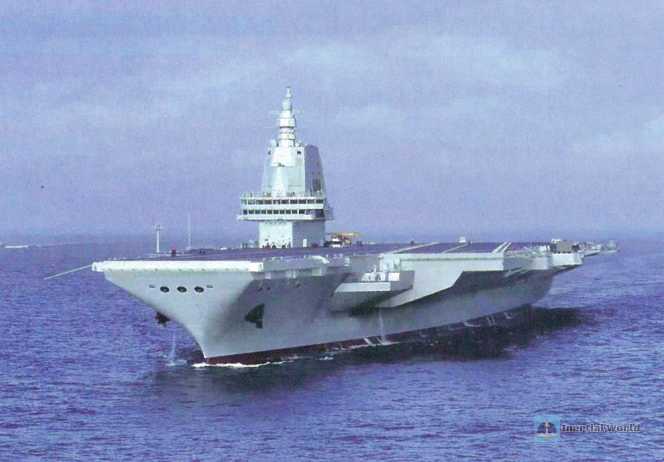
Due to the overall length, width and tonnage of the ship, the overall output power of the power system of the "Fujian" ship has increased, which will definitely be significantly higher than the first two 50,000-ton ski-jump aircraft carriers. At the same time, due to the application of electromagnetic catapults/arresting devices and a large number of radar electronic equipment, it needs to have a stronger power generation capacity, and the output power of the entire power system may not be less than 250,000 horsepower. From the published navigation test photos and videos, we can see the picture of the "Fujian" ship sailing at high speed. Although the sea conditions in the test area are relatively ideal, there are no obvious waves around the bow or the hull of the "Fujian" ship in the high-speed navigation state, which fully demonstrates that the hull line design of the "Fujian" ship is very excellent. Although the size and tonnage of the ship have increased significantly, the sailing resistance is not much greater than that of two 50,000-ton ski-jump aircraft carriers, which undoubtedly greatly guarantees the realization of basic sailing performance indicators.
During the high-speed sailing test, it can be inferred from the huge wake at the stern that the speed of the "Fujian" ship will not be less than 20 knots, and can even reach 25 knots. Of course, in this state, we don’t know whether the power system of the "Fujian" ship is in full power state (considering the first sea trial, the possibility of full power is not great), but its maximum speed of 30 knots is no problem. After all, the Chinese Navy’s requirements for aircraft carrier speed are not as low as those of the British and French navies. The deck wind brought by the higher speed is of great significance for the heavy-load takeoff of carrier-based aircraft, the rapid maneuvering of aircraft carriers, and getting rid of underwater threats. Reaching or even exceeding 30 knots is not a harsh requirement for a modern large flat-deck aircraft carrier (this is also the main reason why the maximum speed of modern large-deck aircraft carriers is generally not less than 30 knots). Reason). If the power output of the entire power system of the "Fujian" ship can be increased to about 250,000 horsepower, there will be no suspense about the maximum speed exceeding 30 knots.

Before the sea trial, some people believed that the power system of the "Fujian" ship was nuclear power or so-called nuclear-conventional hybrid power. It was proved that this was just a "good expectation". After all, the change of the aircraft carrier power plant in terms of technical complexity far exceeded people’s expectations. It will involve comprehensive changes in the structure, layout and protection design of the aircraft carrier. Obviously, the use of unconventional power plants on the first large flat deck catapult aircraft carrier of the Chinese Navy has extremely high potential technical risks, which is not in line with the development path that the main combat equipment of the Chinese Navy has always adhered to.
After solving the technical problems of conventional power plants providing stronger power supply and energy storage, conventional power with lower cost, higher reliability and simpler technology for large aircraft carriers using electromagnetic catapults is not unacceptable. Especially for the Chinese Navy, which has an extremely urgent need for new aircraft carriers and new types of shipborne combat forces, the issues to be considered are to minimize the overall technical risks of the "Fujian" ship, shorten the test cycle and accelerate the formation of combat effectiveness. Against this backdrop, the "Fujian" ship, which can meet the future combat needs of the Chinese Navy in terms of performance and adopts a conventional power system, is the most correct choice for the aircraft carrier special forces in the Chinese Sea at this stage. The nuclear power system has more time for research, testing and development, which is also of great benefit to the subsequent development of flat-deck nuclear-powered aircraft carriers.
Integrated island and radar system
Although the test and testing work of the "Fujian" ship, which conducted its first sea trial after launching, only involved power and electricity, it can be seen from the sea trial photos and videos that the installation of other equipment and weapons on the ship has been completed. In particular, the unique island design and advanced radar detection system were also presented to the world in full state for the first time, which became another highlight of the "Fujian" ship’s first sea trial.
The island of an aircraft carrier can be said to be the only superstructure on the aircraft carrier platform, and it has an important function as the command and control center of the entire aircraft carrier. Based on maximizing the available area of the flight deck, the size of the island is often as small as possible (theoretically, no island is the most ideal). However, in actual application, it is still very difficult for the island to fully meet the requirements of combat, equipment installation and miniaturization, especially for aircraft carriers using conventional power systems (because of the existence of smoke exhaust system channels). This is also one of the important reasons why the US Navy has completely eliminated conventional aircraft carriers and maintained an all-nuclear powered aircraft carrier fleet. As a conventional powered aircraft carrier, the Fujian ship has a very challenging task to achieve the miniaturization of the island. In fact, since the Liaoning ship, relevant personnel have been committed to the miniaturization of the island, but due to the limitations of the original design of the Varyag, the changes have been extremely limited. By the time of the self-designed and built Shandong ship, the entire island has made great progress compared with the Liaoning ship. With the overall design layout and power system basically the same, the volume of the island has been reduced by nearly 15%, and the deck area has increased by nearly 180 square meters.
In addition, the Fujian ship has further optimized the island structure design. With little change in the exhaust channel of the power system, the length of the island has been reduced to about 40 meters. Considering the area occupied by the independent radar mast on the rear deck of the Nimitz-class island, the two are basically the same. The former uses conventional power, while the latter uses nuclear power. If the follow-up ship of the Fujian also uses a nuclear power system, even if the existing Fujian ship’s island design is used, after the power system smoke exhaust channel (i.e. the chimney on the island) is cancelled, its length can be controlled at about 30 meters, which is basically equivalent to the island of the latest generation of the Ford-class aircraft carrier of the US Navy. In other words, in terms of the miniaturization and integrated design of the aircraft carrier island, China has actually reached a very high level. This is another important reason why the Fujian ship has basically become the "ceiling" of modern large conventional flat deck catapult-type aircraft carriers after its appearance.

The integrated comprehensive detection system installed on the Fujian ship is the most distinctive feature of the entire island. As we all know, the island is responsible for the navigation of the aircraft carrier, the take-off and landing of carrier-based aircraft, command and deck management, and is also the best installation location for various radars and electronic equipment. Therefore, various radars and electronic equipment are often arranged on the island and mast, making it the place with the most dense electromagnetic signals and the most complex electromagnetic compatibility of the aircraft carrier.
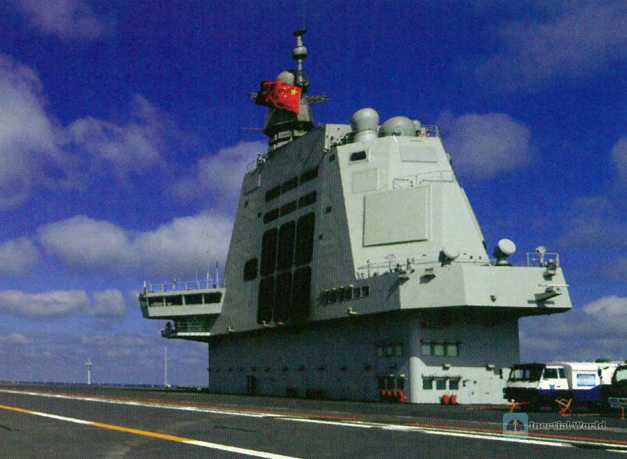
Even so, with the development of technology and the needs of combat, the number of various types of radars and electronic equipment equipped on the aircraft carrier is increasing (mainly including long-range air warning radar, medium- and short-range search radar, sea detection radar, navigation radar, fire control radar, and enemy identification and electronic warfare equipment, etc.), and a single island is difficult to meet the installation requirements. The solution is to increase the size of the island, that is, to set up an independent second mast on the flight deck (like the US Navy’s "Nimitz" class aircraft carrier, which adopts this method, and is also for the consideration of improving electromagnetic compatibility), but this is actually contrary to the original design intention of reducing the size of the island and increasing the available area of the flight deck Back. When developing the new generation of aircraft carriers "Ford" class, the US Navy placed great emphasis on the integrated design of the radar electronic equipment on the island. In addition to having a smaller island with a more optimized design, a more ideal field of view, and a smaller radar reflection area, it also used for the first time a dual-band active phased array radar (S-band and X-band) with multiple working modes and advanced technology to achieve medium and long-range air and sea detection and tracking, air and sea target identification, navigation, weapon fire control and guidance, etc., which greatly reduced the number of radar configurations and saved the limited space on the island. While effectively improving the detection performance and functions of the aircraft carrier, it also greatly improved the electromagnetic compatibility between electronic equipment. It can be said that it has become one of the iconic features of modern advanced aircraft carriers for a long period of time.

However, after the appearance of the "Fujian" ship, the highly integrated design of its island detection system did indeed eclipse the "Ford" class, which was once the world’s "leader". Compared with the "Ford" class, which only uses epoch-making dual-band active phased array radars, the "Fujian" ship has a small number of traditional radars such as short-range surface navigation and landing guidance, as well as larger dual-band radars, long-range sea radars, fire control radars, enemy identification systems, electronic warfare devices, data links, etc., all of which have realized active arrays. Dozens of radar arrays with different functions are installed and arranged on the island, the fully enclosed main mast and even the hull. This This is unprecedented in the history of aircraft carrier development in the world, and it can be said that it has ushered in a "new era".
After the radar electronic equipment of the "Fujian" ship has been fully realized as an active array, it has not only greatly reduced the installation requirements of various types of radars and reduced location restrictions (which is conducive to the miniaturization and stealth design of the island), but also completely solved the electromagnetic compatibility problems that cannot be avoided by the dense installation of a large number of radars and electronic equipment. This is a milestone in the field of radar technology in the world.
The key technology to achieve high integration of all radar electronic equipment is "integrated radio frequency technology", which was first proposed by the US Navy in the 1990s and was experimentally applied on the new generation of "Zumwalt" class destroyers built in the 21st century. However, due to the limitations of various technical conditions, this technology has not been fully applied on other ships. After more than ten years of efforts, China completed a breakthrough in related technologies around 2015 and applied it for the first time on the new generation of 055 10,000-ton destroyers, making it fully ahead of the current destroyers in the world in terms of radar detection and informationized combat capabilities. It is completely reasonable that the "Fujian" ship, which was designed and built at the same time as the Type 055 destroyer, also adopted this advanced technology.

"Integrated RF technology" generally includes two parts: RF aperture integration and RF channel integration: the former is mainly to make RF antennas (i.e. various radar antennas) with different tasks share the aperture to maximize the compression of RF aperture space and optimize RF performance, thereby achieving the purpose of improving detection capabilities; the latter is to manage the original independent RF transceiver systems through digital control software, and even integrate them all on one RF antenna for extremely precise time-sharing management, so as to avoid the problem of occupying electromagnetic space channels and wasting antenna power (in simple terms, it realizes the comprehensive optimization and power distribution of radar energy).
The realization of antenna "active array" for various types of radars and electronic equipment is the basis of this technology application. Without the support of advanced "integrated radio frequency technology", it is difficult to ensure the normal operation of many radars and achieve higher combat effectiveness. In particular, as the core of future far sea operations, aircraft carriers will show great technical advantages in comprehensive situational awareness, target detection, identification and tracking capabilities, combat efficiency, electronic warfare capabilities, multi-task combat effectiveness, and multi-service (multi-platform) information sharing, joint operations, etc. by relying on their own advantages.
The above are just some of the information that the outside world can speculate after the first sea trial of the "Fujian" ship. As its subsequent test work continues, more information will be gradually disclosed, and then we will have a deeper understanding of the technical performance of the "Fujian" ship in all aspects.
Future development prospects
The "Fujian" ship successfully completed its first sea trial, which is a great encouragement for both the Chinese Navy and the Chinese people. After all, this is the first time since the establishment of the Chinese People’s Liberation Army Navy that it has a truly super aircraft carrier that has reached world-class technical level and can compete with the world’s most advanced aircraft carriers in service. Although the tonnage of the "Fujian" ship may not exceed 90,000 tons, it is generally of the same level and type as the "Nimitz" and "Ford" classes of the US Navy. As the "first work" of the Chinese Navy to enter the world’s super aircraft carrier club, the "Fujian" ship will definitely become a template for the future development of a new generation of aircraft carriers by the Chinese Navy. On this basis, the Chinese Navy may further improve its design, improve its technical level, and enhance its combat capability, so as to build an aircraft carrier fleet that conforms to the strategic development of the Chinese Navy, meets the needs of the Chinese Navy’s far-sea operations, effectively defends China’s sovereignty and territorial integrity, and safeguards its maritime rights and interests and overseas economic interests.
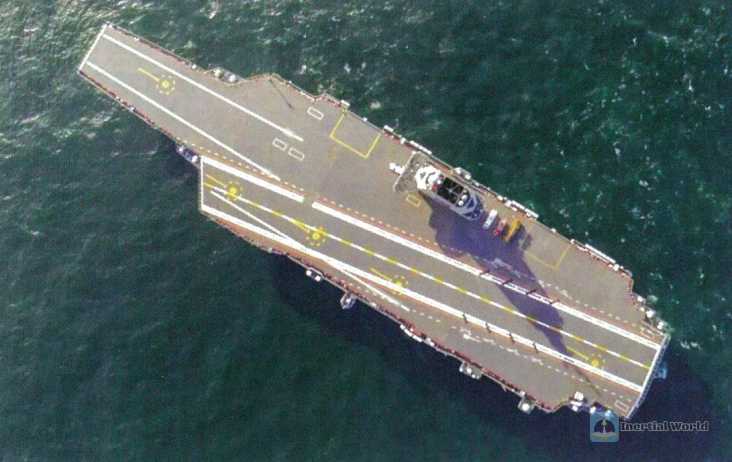
The appearance of the Fujian ship indicates that China has fully opened up the technical process of designing and building modern flat-deck catapult-type aircraft carriers, and some key technologies and equipment have also achieved complete breakthroughs. The Fujian ship is also called the "ceiling" of modern conventional aircraft carriers. As China’s first flat-deck catapult-type aircraft carrier, although the Fujian ship also uses a large number of new technologies, new equipment and new designs, considering the technical risk cost and the complexity of simplifying the construction process, it still has a certain "blood relationship" with the two ski-jump aircraft carriers in some aspects. For example, the hull structure of the Fujian ship is still improved based on the Shandong ship, and some internal structural designs are not much different from it. The design and layout of the power system are also similar to the Shandong ship. These are all considered to shorten the construction period and encourage the troops to master new equipment and form combat capabilities as soon as possible. Especially during the construction of the Fujian ship, whether it uses nuclear power has always been the focus of attention from the outside world. Obviously, the Chinese Navy did not choose this "very radical, one-step" approach, which is also the result of the Chinese Navy’s careful consideration.
First of all, in terms of technology, China currently does not have a set of advanced, stable, reliable and practical nuclear power plants for ships. Judging from the performance of the submarine nuclear power plant used by the French Navy’s "Charles de Gaulle" aircraft carrier, this attempt to reduce technical risks and development costs by "submarine reactor on board" is not feasible.
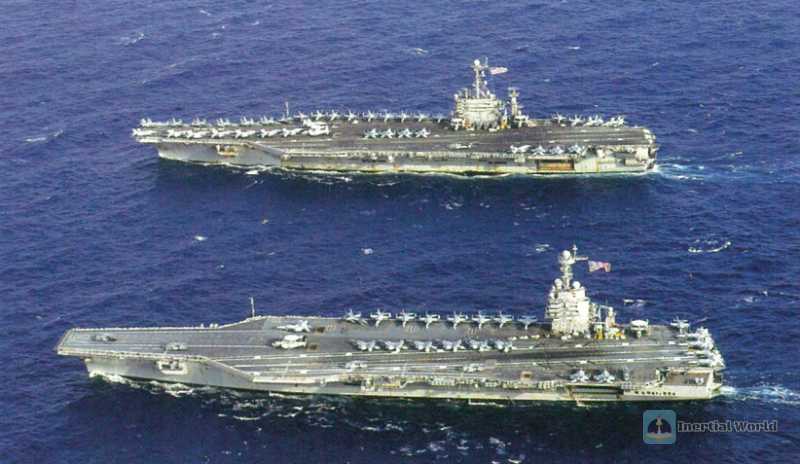
The "Nimitz" and "Ford" class aircraft carriers equipped by the US Navy, which currently has the largest nuclear-powered aircraft carrier fleet, both use nuclear power plants developed for the characteristics of aircraft carrier use. Only when the conditions of small size, light weight, high power, safety and reliability, and good protection are met, can the aircraft carrier achieve the effect of 1+1>2. Otherwise, like the "Charles de Gaulle", it will not only be counterproductive, but also difficult to play the advantages of nuclear power plants.
Therefore, for China, which already has rich experience in the development and manufacturing of submarine nuclear power plants, future nuclear-powered aircraft carriers will certainly use ship-type nuclear power plants, and considering the tonnage and technological advancement of aircraft carriers, all indicators must be at least equivalent to the A1B nuclear power plant used on the "Ford" class aircraft carrier (even the more advanced fourth-generation technology will be used).
Although China’s nuclear power plant (including military and civilian reactors) development capabilities and technical levels have made great progress since the 21st century, it still faces considerable difficulties in developing ship-type nuclear power plants with higher technical requirements, more advanced performance, and higher requirements for reliability, safety, volume, weight, and quietness.
In addition, even after the development is completed and land tests are carried out, China will most likely build another "test ship" for more in-depth and comprehensive sea tests. The time to start the construction of a nuclear-powered aircraft carrier can only be determined after all technical performance indicators meet the design standards. This process will obviously not end soon. Even if everything goes well and no technical bottlenecks or difficulties are encountered during the development, it will take at least 10 years. If the performance reliability, safety and stability of this nuclear power plant cannot meet the design requirements 100%, the Chinese Navy will definitely not start the construction of a nuclear-powered aircraft carrier, let alone "extravagantly" use a newly built 100,000-ton aircraft carrier platform to test the nuclear power plant. If the Chinese Navy believes that the "Fujian" ship and even the subsequent improved version can meet the needs of maritime operations in the next 10 to 15 years, then the installation of nuclear-powered aircraft carriers is actually not something that needs to be completed quickly in the near future for the Chinese Navy.
The appearance of the "Fujian" ship has greatly raised people’s expectations of the performance ceiling of large catapult-type conventional-powered aircraft carriers, especially when facing nuclear-powered aircraft carriers such as the US Navy’s "Nimitz" class and the new generation of "Ford" class. The overall performance of the "Fujian" ship is not backward. After being equipped with a complete carrier-based aircraft combat force, it is fully capable of effective confrontation. This is the first time that such a situation has occurred in the development of modern aircraft carriers since World War II for more than half a century.
In this case, given that the overall naval strategy of the Chinese Navy will not change fundamentally at this stage and even in the future, there is no essential difference between conventional-powered aircraft carriers and nuclear-powered aircraft carriers for the combat needs and combat missions undertaken by the Chinese Navy. This also determines that it is far more important to quickly expand the scale of aircraft carriers than to concentrate more efforts and spend more time on the development of nuclear-powered aircraft carriers. The construction and testing cycle of highly complex and super-large combat equipment such as aircraft carriers will not be affected by technology, manufacturing conditions, and production processes. The time required for the Fujian ship to be delivered to the Navy will be greatly shortened due to progress. Even with the extremely high degree of outfitting completion and the subsequent 7 to 10 sea trials being successfully completed, it will take more than one and a half years for the Fujian ship to be delivered to the Navy (this is a completely ideal result). After receiving the ship, it will take more than two years for the Navy to fully form its combat capability (in fact, judging from the time it took for the two ski-jump aircraft carriers built by the Chinese Navy in the early days to form combat capabilities, two years is already a very optimistic estimate)
In other words, the Fujian ship will be in intensive and heavy testing and training work before 2027, and it will be difficult for it to undertake real combat missions. Therefore, during the "window period" when the Fujian ship’s combat capability is formed, the two active ski-jump aircraft carriers still need to To shoulder the heavy responsibility of the Chinese Navy’s ocean-going operations (this also explains why after completing the construction of the "Fujian" ship, the Chinese Navy is still constantly improving and upgrading the two ski-jump aircraft carriers, and improving the overall combat capability and battlefield adaptability by modifying/adding a new generation of radar, electronic equipment, command systems, and integrating a new generation of stealth carrier-based fighters and electronic warfare aircraft)
It can be seen that the "Fujian" ship, whose current technical performance has reached a very high level and whose potential technical risks are already very low, should enter the batch construction of subsequent ships as soon as possible, and adopt the "dual shipyard parallel construction" model when conditions permit, so as to solve the problem of long aircraft carrier construction cycle and difficulty in forming scale advantages in a short time to a certain extent.
At present, the biggest problem that the Chinese Navy needs to face is time. It takes at least 5 to 6 years from the construction to the launch and service of a modern large aircraft carrier. If the time for the troops to train and form combat capabilities after delivery is taken into account, it basically takes 7 to 8 years. If the traditional single-ship sequencing construction model is adopted, it cannot be guaranteed that the number of aircraft carriers will increase significantly in a short period of time. For example, the US Navy started construction of four Nimitz-class aircraft carriers between 1984 and 1993 (all built by Newport News Shipbuilding and Dockyard, the only company in the US capable of building aircraft carriers, with an average interval of about three years between the construction of two aircraft carriers). All four aircraft carriers were delivered to the US Navy before 1999, a total of nearly 16 years.
China already has two shipyards capable of building aircraft carriers, and has completed the construction of three aircraft carriers, the Liaoning, Shandong, and Fujian. Both shipyards have the technical strength and facilities to build aircraft carriers of more than 80,000 tons. It can be seen that my country has a stronger ability and technical foundation for mass construction of aircraft carriers, which is a clear advantage over the current situation faced by the United States.
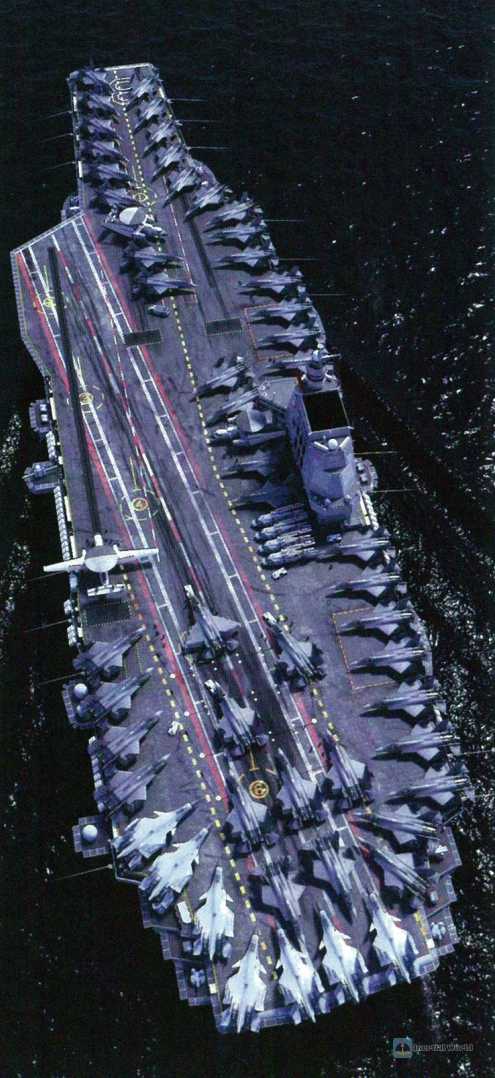
Assuming that the Chinese Navy starts to build two follow-up ships of the "Fujian" ship at the Dalian and Jiangnan shipyards in 2025, and starts to build the second batch of two follow-up ships in 2027, then theoretically the first batch of two aircraft carriers will be launched around 2028. Considering that the Chinese Navy has already had rich experience in the various performance, operating specifications, tactics, maintenance and support of the "Fujian" ship during this period, and has even fully formed combat capabilities, the subsequent trials, tests and formation of combat effectiveness of these two new aircraft carriers will be greatly shortened, and they will have corresponding combat capabilities before 2032. At this time, the second batch of two aircraft carriers should have completed the outfitting work and entered the sea trial stage, and they can be ready for actual combat deployment before 2035. In this way, the Chinese Navy will actually have four large catapult-type aircraft carriers of 80,000 to 90,000 tons in just about 10 years. If we count two ski-jump aircraft carriers and the "Fujian" ship, which will be "old" by then, the scale of China’s naval aircraft carriers will reach 7 in 10 years.
Although they are all conventionally powered aircraft carriers, 5 of them are super aircraft carriers with world-class technical performance. In addition to the power plant, the performance of the 5 flat-deck catapult aircraft carriers of the Chinese Navy is actually no different from the "Nimitz" class and "Ford" class nuclear-powered aircraft carriers of the US Navy, which will each occupy half of the country. They should be able to rank second in the world in terms of size. In the Asia-Pacific region, 5 large catapult aircraft carriers of 80,000 to 90,000 tons have far exceeded the number of normal deployments of the US Navy in the region, and under ideal conditions, 5 catapult aircraft carriers can also dispatch 2 to 3 ships at any time to perform far sea combat missions, which can not only form a powerful sea and air strike combat cluster in a single direction, but also meet the requirements of maintaining an aircraft carrier formation in the Western Pacific, the South China Sea and even the Indian Ocean. At this time, the Chinese Navy’s aircraft carrier combat force can already compete with the US Navy deployed in the Asia-Pacific region in terms of quantity and quality, and the so-called "second island chain" will completely lose its meaning of existence, and China’s overall maritime security situation will be greatly improved. In other words, before the Chinese Navy has entered the stage of "global presence", from the perspective of economy, technology, performance, and combat needs, 80,000 to 90,000 tons of conventional-powered aircraft carriers are in line with the needs of the Chinese Navy’s development and construction, and they will become the "foundation" for the Chinese Navy to truly go global in the future.
After this situation is formed, the Chinese Navy’s research and development of nuclear-powered aircraft carriers can play a greater role and value. In summary, the appearance of the "Fujian" ship can be seen as China’s clarion call to enter the world’s first-class naval power sequence, and it also kicked off the prelude to breaking the US Navy’s long-term technical monopoly on super aircraft carriers, marking that China has begun to build an aircraft carrier battle group that rivals the US Navy.




